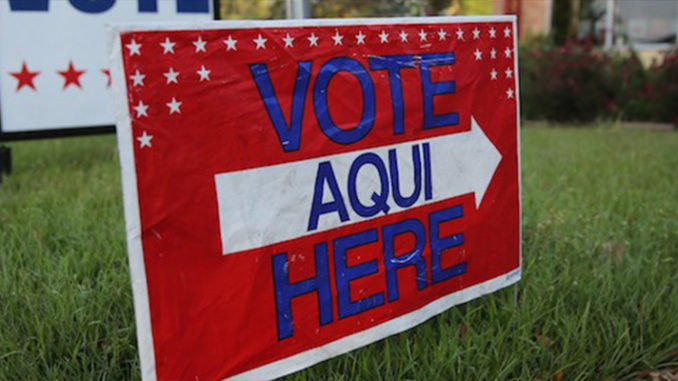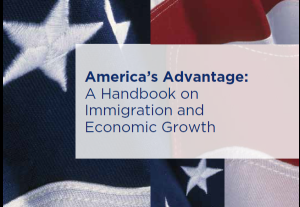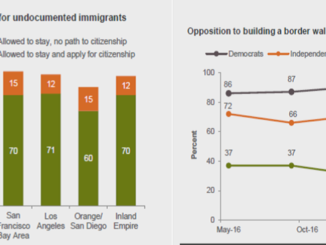
by Perry Bacon Jr.
A sizable bloc of Latino voters have remained aligned with Republicans in the Donald Trump era. This seems surprising, considering that he described Mexicans who sought to come to the United States as drug users and rapists during his 2016 campaign, his administration has adopted anti-immigration policies, and Democrats are taking increasingly liberal stances on immigration issues. Some journalists expected that Trump would severely damage the GOP’s standing with Latino voters. So why hasn’t that happened?
The Latino vote in 2016 and 2018 was pretty similar to what it was in elections held before President Trump became the defining figure of the GOP. At least 1 in 5 Latino voters nationally backed Trump in 2016. This November, at least 1 in 4 Latino voters across the country backed a House Republican candidate. (Some pollsters found a slightly higher percentage.) Trump and some statewide Republican candidates have done even better in Florida, getting more than 30 percent of the Latino vote in 2016 and 2018. (Florida has a large population of Cubans, who are traditionally more conservative than other Latinos, so that partially explains what we’re seeing there.)
This bloc of Latinos backing GOP candidates really matters. You can see why when you drill down into individual races. Texas Sen. Ted Cruz got at least 22% of the Latino vote in his race against Democrat Beto O’Rourke, a campaign the Republican won by only 2,5 percentage points. Latinos make up more than 20 percent of the electorate in Texas, so Cruz could not have won without getting a substantial number of Latino voters to back him. (Yes, Cruz is Cuban. But exit polls suggest Republican Texas Gov. Greg Abbott, who is white, won an even higher percentage of Latino voters than Cruz in his successful re-election bid.)
To be sure, the overwhelming majority of Latino voters backed Democrats nationally in 2016 and 2018. But the percentage of Latinos who backed Republicans in 2016 and 2018 is at least double the percentage of African-American voters who supported Republican candidates in those elections. The GOP is regularly cast as struggling to connect with “minorities,” but nonwhite voters are not actually a single unified group, and Republicans are doing significantly better with Latino voters than they are with African-Americans.
So again, why hasn’t there been a huge Latino voter backlash to Trump? Let me examine four potential explanations. I have ordered them from most to least plausible, at least in my opinion.
Theory 1: Partisanship is strong
The most obvious explanation is that there were good reasons why a sizable portion of Latino voters favored Republicans pre-Trump — and those reasons haven’t changed. In short, this is about political stability: Most American voters have stuck with a single party both before and after Trump’s election, and Latino voters are no different from the rest of the country.
It’s hard to prove this theory, since we don’t have much information about individual American voters. But here’s some strong evidence for it. For the last two decades, according to the Pew Research Center, about 25 percent of Latino voters have said they back the Republican Party, a number that has remained about the same in the Trump era. A significant number of Latinos (30 percent, per Pew) say they have conservative political views. They are likely sticking with Trump for the same reason as they stick with other Republicans — because he’s closest to them on issues like taxes or abortion.
“There is a growing evangelical share among Hispanics, and that may be an important part of the story for Republican Latinos,” said Mark Hugo Lopez, Pew’s director of Hispanic research.
Trump’s approval rating among Latinos also hovers between 20 and 30 percent in national polls (compared to 60 and 70 percent disapproval). That number is more evidence that a solid minority of Latinos is likely to remain aligned with Trump and the Republican Party.
Theory 2: Immigration isn’t a deal-breaker
Observers have assumed that Trump’s rhetoric on immigration would turn off Latino voters en masse, even some of the more conservative ones. But it seems that Trump’s immigration approach isn’t a deal-breaker for many Latinos, because they either agree with him or aren’t that amped up about the issue.
According to a recent Pew poll, a fifth of Latino voters say that there are too many immigrants in the United States, and a quarter favor Trump’s idea of building a wall on the U.S.-Mexico border. About half of Latino voters say they are fairly worried that a family member or close friend might be deported, but the other half is not too worried about such deportations, according to that same survey.
Specifically, most Latinos who were born abroad say they are worried about deportations, but the majority of Latinos who were born in the United States are not.
“There has long been a significant portion of the Latino population that supports reducing immigration and closing the borders,” said Melissa Michelson, a political science professor at Menlo College in California and author of the 2014 book “Living the Dream: New Immigration Policies and the Lives of Undocumented Latino Youth.”
“You could argue Trump’s policies and the rise of anti-immigration sentiment even encourages that,” she added.
In that Pew survey, when Latino registered voters were asked to rank the issues most important to them, the plurality (19 percent) put the economy at the top, as did American voters overall. But it’s worth noting that immigration was still the second-biggest concern, with 16 percent of Latino registered voters saying that it was their top issue. Another 10 percent said President Trump was the country’s biggest problem, and 8 percent said it was race relations or racism. All three responses hint at concerns about how Trump’s policies affect Latinos.
Theory 3: Republican appeal
Maybe Republican politicians are doing a better job wooing Latino voters than is commonly believed, and maybe Democrats are not taking advantage of the opportunity that Trump presents. I’m skeptical of this explanation, largely because the data suggests that Latino voters are continuing to follow their pre-Trump voting patterns.
That said, Republicans like Texas Gov. Abbott and Florida’s Rick Scott (who won a U.S. Senate seat) both did extensive outreach to the Latino communities in their campaigns this year. (This approach is in contrast to how the GOP increasingly ignores African-American voters.) On the Democratic side, some Democratic strategists criticized gubernatorial candidate Andrew Gillum and Sen. Bill Nelson for not investing enough time or money on Latino outreach in Florida, as Politico reported. Both candidates lost.
Matt Barreto, a UCLA political science professor who has also worked on polling and political strategy for some Democratic politicians, including Hillary Clinton in 2016, told me that Scott “had a statewide, multi-ethnic approach, and Nelson was slow to respond.”
Theory 4: Maybe we’re wrong
My fourth and final explanation is not really an explanation at all, but a suggestion that the entire premise of this piece might be wrong. What if Latinos are deserting the GOP because of Trump, but it’s happening at a gradual enough pace that is not currently being captured by most polls.
The polling firm Latino Decisions estimates that Trump won 18 percent of Latino voters in 2016, a dip from the 23 percent who the firm estimated backed Mitt Romney in 2012. Latino Decisions specializes in polling Latino-Americans, and the company argues that exit polls from other firms overstate the number of Latinos who back GOP candidates in part because those firms don’t interview enough Latino voters who primarily speak Spanish. (The exit polls from the national networks suggest Romney got about 27 percent of the Latino vote in 2012 and that Trump got about the same percentage.)
In House races across the country last month, Latino Decisions says Republicans won 24 percent of the Latino vote. (The network exit polls estimated 29 percent.) This was a slight uptick from 2016, but Trump was not on the ballot, so it’s possible Latino voters viewed other Republican candidates differently than they view the president. But if the GOP Latino vote did drop by 5 percent in 2016 because of Trump, it’s plausible that his policies and rhetoric as president could result in a further decline the next time he’s on the ballot. So I think it’s possible (but not necessarily likely) that Trump gets something like 15 percent of the Latino vote in 2020. And if that happened, that would mark a significant decline from 2012, the pre-Trump era for the GOP.
“The Republican Party since the 1960s has alienated African-Americans to such a large degree. They haven’t done it to the same degree with Latinos — yet. But what you are seeing now is an alienation of Latinos by Republicans that is unprecedented,” said Indiana University political science professor Bernard Fraga, who specializes in studying the voting behavior of racial minorities.
To conclude, let me again emphasize that Latino voters overall are heavily Democratic and don’t like Trump. News articles that portray Democrats as having a “Latino problem” are, in my opinion, a bit off. It’s hard to say a party has a problem with a voting bloc that it wins by more than 35 percentage points nationally. The Democrats’ strength with Latino voters was a major factor in the party’s ability to flip GOP-controlled Senate seats in both Arizona and Nevada, two states with large blocs of Latino voters.
But it’s also true that Republicans continue to win a meaningful share of the Latino vote. And that has major implications. Florida remains a hugely important swing state in presidential elections, and now Democrats are talking about trying to win Arizona and maybe even Texas next year. Democrats could carry those states by winning more white voters, particularly those in the suburbs, but Democrats could also motivate Latinos who have not previously voted to cast ballots in those states. Or they could try to win over Latinos who have traditionally voted for Republicans.
For Republicans, this bloc of the electorate is just as critical. The path for Trump to win re-election probably includes him winning Arizona, Florida and Texas — and that would be easier if his Latino support doesn’t, say, bottom out to single digits in those states. But I don’t expect Trump to do much in the next two years to woo Latino voters. So the big question is whether Trump will have alienated Latino voters so much by 2020 that even those who have long backed GOP candidates decide that they can’t keep voting Republican.
Perry Bacon Jr. is a senior writer for FiveThirtyEight. @perrybaconjr



